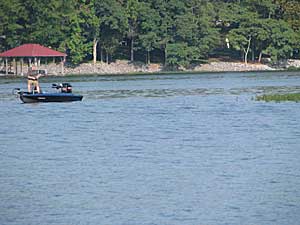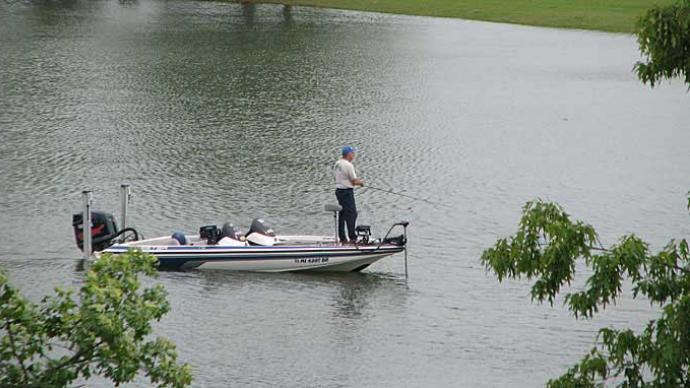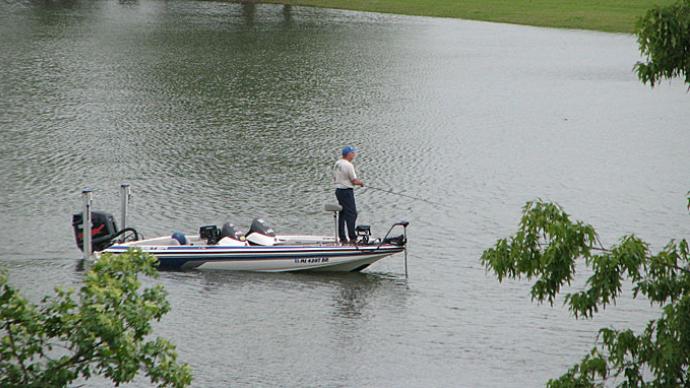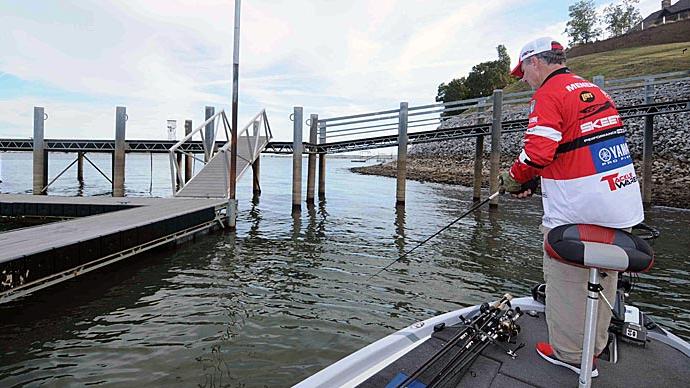
Many articles have been written on cold fronts and how they affect fishing. One thing most anglers do know is that changing weather most definitely changes fishing success. The first cold fronts that hit early fall start cooling the water temperature. This usually gets the fish in a feeding mode. These fronts are usually mild and don't drop the air temperature much. Baitfish will start moving back into the backs of the creeks as the water cools. The bass will follow them, and you will see schooling activity. This is an exciting time of the year for the fisherman. As the fronts start to get stronger, the fishing will change as the fronts hit and move through the areas you're fishing. The stronger the front, the more challenging the bite will get. If an icy front hits and the temperature in the air and water drops drastically, the fishing can suffer considerably.
Fall fishing can be exciting when the fronts start cooling the water. The schooling fish can be caught with almost any lure you choose to use. A lipless crankbait, spinnerbaits, and small crankbaits will all work. After the summer heatwaves, the first cold fronts trigger all wildlife to get active. That is why it is better to use a very active bait at this time. The bass are very active, and anything moving by at an erratic pace will get their attention.
As the cold fronts get more robust and colder, the fish will become less active as each front passes. The fish will become lethargic as the fronts pass and bring cooler water temperatures.
When winter starts to approach, the best time to fish is before a front hits. This is a prime time to catch a giant fish or many fish. The barometric pressures will start to change, affecting the fish and their feeding activities. Bass will react to the fronts by feeding until the front has passed and then becoming inactive once again.
The barometric pressure usually becomes very high immediately after the front passes. You have heard the old saying, "The fish have lockjaw." This usually happens after an icy front hits, and the sun comes out. When the front passes and you are planning a fishing trip, try to wait two or three days after it passes as the fish will start to get back into their routines. If you can't wait, as in my business, you will need to change your fishing tactics. Lighter line and smaller lures. The fish will move into tighter cover and stay there until the front passes.
The fisherman who is a good flipper or pitcher will usually out-fish everyone else at this time. When the front passes, get out a small jig or worm and pitch it into thick brush. If timber is your main structure, work close to the trees' bases. The best tip at this time is SLOW DOWN. You may have to pitch a jig or worm many times to the same area to draw a strike. When the fish are this tight, you will almost have to hit them on the head to get their attention. Many pros will count the number of pitches to a bush or tree before getting a strike. This may set the stage for a pattern. After six pitches, try this approach on the next bush or tree if you get a bite.
There are times you can set a pattern on what size of bush or tree to work on and eliminate the rest of the trees. The fish may be against the structure or off to the side. This is why it is so important to hit all sides of a tree or bush and remember which side the strike came from.
If rock is your structure, the fish may suspend over or on the base of them. Ledges and points are excellent areas to look at during this time. The primary key is to work tight to the cover and work it slowly. You won't usually catch many fish when they are in this mode. But you may catch the fish of a lifetime. Sometimes the fish will get out on the deep humps, and a jigging spoon will catch them. I have found fish suspended over deep humps after fronts. Sometimes just hopping a spoon will catch these fish. Sometimes you have to hold the spoon very still. Natural line twist will cause it to turn, which will draw a strike. Slow-rolling big spinnerbaits over humps is another good pattern this time of year.
Remember, SLOW, SLOW, and SLOW, then even more slowly, is the answer to catching fish after the passing of the cold fronts.




